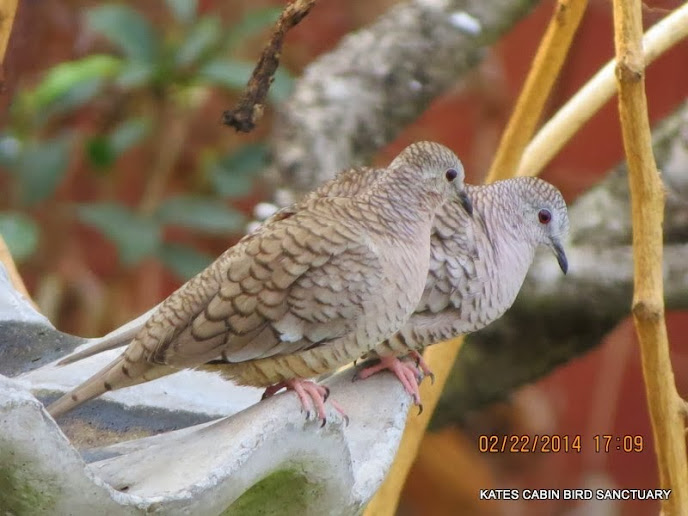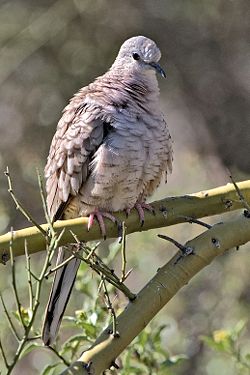
Hi Everybody!!
As you know, my winter birds left last week on Migration to the North. They probably flew a couple of days then landed to eat and refresh before continuing the journey. At the same time, birds further south than me also headed North. I am the stop off, eat and refresh location for this flock of birds coming in now. I call these the 'Berry Birds', as they swoop down and eat the remaining berries on the trees. There is one berry bird I really prize and that is the Cedar Waxwing. They love the cherry laurel berries the most, then the hollies. Another large flock of robins came in also. They like the cherry laurels and the new things they find in the grasses. More doves came in and they will be staying and raising the young here. Also more red bellied woodpeckers, who will also stay for spring and nest in trees. Your links are below to my G+ Photo Albums. Enjoy!

Link to G+ Photo Album:
https://plus.google.com/u/0/photos/117645114459863049265/albums/5983673644778844369
Cedar Waxwing
From Wikipedia, the free encyclopedia
The Cedar Waxwing (Bombycilla cedrorum) is a member of the family Bombycillidaeor waxwing family of passerine birds. It is a medium sized, mostly brown, gray, and yellow bird named for its wax-like wing tips. It is a native of North and Central America, breeding in open wooded areas in southern Canada and wintering in the southern half of the United States, Central America, and the far northwest of South America. Its diet includes cedar cones, fruit, and insects.[2] The Cedar Waxwing is not endangered.
| Cedar Waxwing | |
|---|---|
 | |
| Conservation status | |
| Scientific classification | |
| Kingdom: | Animalia |
| Phylum: | Chordata |
| Class: | Aves |
| Order: | Passeriformes |
| Family: | Bombycillidae |
| Genus: | Bombycilla |
| Species: | B. cedrorum |
| Binomial name | |
| Bombycilla cedrorum Vieillot, 1808 | |
 | |
| Cedar Waxwing range Breeding range Year-round range Wintering range | |
Distribution and Habitat[edit]
Preferred habitat consists of trees at the edge of wooded areas, or "open" forests, especially those that provide access to berry sources as well as water. They are frequently seen in fruiting trees.[3] Waxwings are attracted to the sound of running water, and love to bathe in and drink from shallow creeks. In urban or suburban environments, waxwings often favor parkland with well-spaced trees; golf courses, cemeteries, or other landscaping with well-spaced trees; bushes that provide berries; and a nearby water source such as a fountain or birdbath. Also look for them near farms, orchards, and gardens, particularly ones with fruiting trees or shrubs.[3]
Outside the breeding season, Cedar Waxwings often feed in large flocks numbering hundreds of birds. This species is nomadic and irruptive,[7] with erratic winter movements, though most of the population migrates farther south into the United States and beyond, sometimes reaching as far as northern South America. They will move in huge numbers if berry supplies are low. Rare vagrants have reached western Europe, and there are two recorded occurrences of Cedar Waxwing sightings in Great Britain. Individual Bohemian Waxwings will occasionally join large winter flocks of Cedar Waxwings.
In winter, these birds can be very confident and will come into gardens for berry bushes and trees and to drink from fountains or bird baths.
Behavior and Ecology[edit]
Cedar Waxwings are sociable, seen in flocks year round.[3] They are non-territorial birds and "will often groom each other."[5] They move from place to place depending on where they can find good sources of berries.[5]

Planting a Savannah Holly Tree - Ask.com
www.ask.com/explore/planting-savannah-holly-tree
Mar 9, 2011 - Savannah holly trees, or Ilex S attenuata 'Savannah,' are native to North America and are best planted in USDA hardiness zones six through ...

Link to G+ Photo Album:
https://plus.google.com/u/0/photos/117645114459863049265/albums/5984783502965682753

The Love Doves!


Inca Dove
From Wikipedia, the free encyclopedia
https://en.wikipedia.org/wiki/Inca_Dove
The Inca Dove (Columbina inca) is a small New World dove; it might belong to thegenus. It ranges from the southwestern United States and Mexico through Central America to Costa Rica; the Inca Dove only lives on the Pacific side of Central America. Despite being named after the Inca Empire, this species does not occur in any of the lands that constituted that region. Inca Doves are common to abundant within their range and they are expanding their range north and south.
Inca Doves reach a length of 16.5–23 cm (6.5–9.1 in) and weigh 30–58 g (1.1–2.0 oz).[2] They are slender, with a gray-brown body covered in feathers that resemble a scaled pattern. The tail is long and square, edged with white feathers that may flare out in flight. In flight, the underwing is reddish, like other ground doves, and on takeoff, the wings produce a distinctive, quiet rattling noise.
This is a terrestrial species which occurs in flocks in open areas including scrub and cultivation. It will feed in urban areas, eating grass seeds and taking advantage of the ready availability of water from agricultural and suburban irrigation. The song, a forceful cooing rendered variously as "cowl-coo" or "POO-pup", may be given from a tree, wire, or other open, high perch such as a television aerial.
During winter, they roost in communal huddles in a pyramid formation that helps them conserve heat. These pyramids can contain up to 12 birds.[3]
Inca Doves live near areas of human habitation and feed in opens areas such as lawns and barnyards. They build their nests primarily in trees and shrubs. The male gathers the nesting material and presents it to the female, who also gathers some nesting material. The nest is composed of twigs, grass, and leaves and becomes reinforced with the brood's excrement.[4]
| Inca Dove | |
|---|---|
 | |
| Conservation status | |
| Scientific classification | |
| Kingdom: | Animalia |
| Phylum: | Chordata |
| Class: | Aves |
| Order: | Columbiformes |
| Family: | Columbidae |
| Genus: | Columbina |
| Species: | C. inca |
| Binomial name | |
| Columbina inca (Lesson, 1847) | |

Link to G+ Photo Album:
https://plus.google.com/u/0/photos/117645114459863049265/albums/5983630397055073041




Flowering Quince
Link to G+ Photo Album:
https://plus.google.com/u/0/photos/117645114459863049265/albums/5983700173060149553

The Gold Hummer did not leave on migration
Red Bellied Woodpecker


https://plus.google.com/u/0/photos/117645114459863049265/albums/5983768992966240769


Red-bellied Woodpecker
From Wikipedia, the free encyclopedia
https://en.wikipedia.org/wiki/Red-bellied_Woodpecker
The Red-bellied Woodpecker (Melanerpes carolinus) is a medium-sized woodpecker of the Picidae family. It breeds in southern Canada and the northeastern United States, ranging as far south as Florida and as far west as Texas. Its common name is somewhat misleading, as the most prominent red part of its plumage is on the head; the Red-headed Woodpecker, however, is another species that is a rather close relative but looks quite different.
It was first described in Linnaeus' Systema Naturae, as Picus carolinus.[2] The type localityis given simply as "America septentrionalis" (North America).
| Red-bellied Woodpecker | |
|---|---|
 | |
| Adult male | |
| Conservation status | |
| Scientific classification | |
| Kingdom: | Animalia |
| Phylum: | Chordata |
| Class: | Aves |
| Subclass: | Neornithes |
| Infraclass: | Neognathae |
| Superorder: | Neoaves |
| Order: | Piciformes |
| Suborder: | Pici |
| Family: | Picidae |
| Subfamily: | Picinae |
| Tribe: | Dendropicini |
| Genus: | Melanerpes |
| Species: | M. carolinus |
| Binomial name | |
| Melanerpes carolinus (Linnaeus, 1758) | |
 | |
| Range of M. carolinus | |
Description[edit]
Adults are mainly light gray on the face and underparts; they have black and white barred patterns on their back, wings and tail. Adult males have a red cap going from the bill to the nape; females have a red patch on the nape and another above the bill. The reddish tinge on the belly that gives the bird its name is difficult to see in field identification. They are 22.85 to 26.7 cm (9.00 to 10.51 in) long, and have a wingspan of 38 to 46 cm (15 to 18 in).[3]
Vocalizations[edit]
Red-bellied woodpeckers are noisy birds, and have many varied calls. Calls have been described as sounding like churr-churr-churr orthrraa-thrraa-thrraa with an alternating br-r-r-r-tsound. Males tend to call and drum more frequently than females, but both sexes call. Often, these woodpeckers "drum" to attract mates. They tap on aluminum roofs, metal guttering, hollow trees and even transformer boxes, in urban environments, to communicate with potential partners. Babies have a high-pitched begging call of pree-pree-pree. They will continue to give a begging call whenever they see their parents for a while after fledging.
These birds mainly search out arthropods on tree trunks. They may also catch insects in flight. They are omnivores, eating insects, fruits, nuts and seeds. Their breeding habitat is usually deciduous forests. They nest in the decayed cavities of dead trees, old stumps, or in live trees that have softer wood such as elms, maples, or willows; both sexes assist in digging nesting cavities. Areas around nest sites are marked with drilling holes to warn others away.
Though the species is not globally threatened, it depends on large trees for nesting. In areas that are extensively deforested, the birds will sometimes utilize gardens, but for the most part simply will not be present in any numbers.[4]
Foraging[edit]
As with all animals, foraging becomes an important role in an animal’s ability to survive and reproduce. The Red-bellied Woodpecker expresses foraging behavior by catching or storing food.[5] The woodpecker uses its bill for foraging as a chisel drilling into bark or probing cracks on trunk of trees.[5] In this manner, the Red-bellied Woodpecker is able to pull out beetles and other insects from the tree with the help of its long tongue.[5] This behavior is also seen for storing food from other animals by hiding food behind bark or deep in cracks of a tree.[5] According to studies from Williams 1975, Breitwisch 1977, and Batzil 1979, the Red-bellied Woodpecker spent 20% to 69% foraging on dead or decaying trees. In addition, Williams 1975, Breitwisch 1977, and Batzil 1979 observed Red-bellied Woodpecker 80% gleaning and probing and 10% excavating on trees in South Florida pine habitat.[6] The Red-bellied Woodpecker relies on snags or dying trees for foraging and nesting.[7]

File:Red-bellied Woodpecker Female.jpg
From Wikipedia, the free encyclopedia

I found the Nest:

...this is brendasue signing off from Rainbow Creek. See You next time!

O+O






No comments:
Post a Comment
Hi Everybody! Please say hello and follow so I know you are here! Due to the inconsideration of people trying to put commercials on my blog comment area, I have restricted use of anonymous posts. Sorry that some hurt all.
My public email is katescabin@gmail.com No spammers or trolls